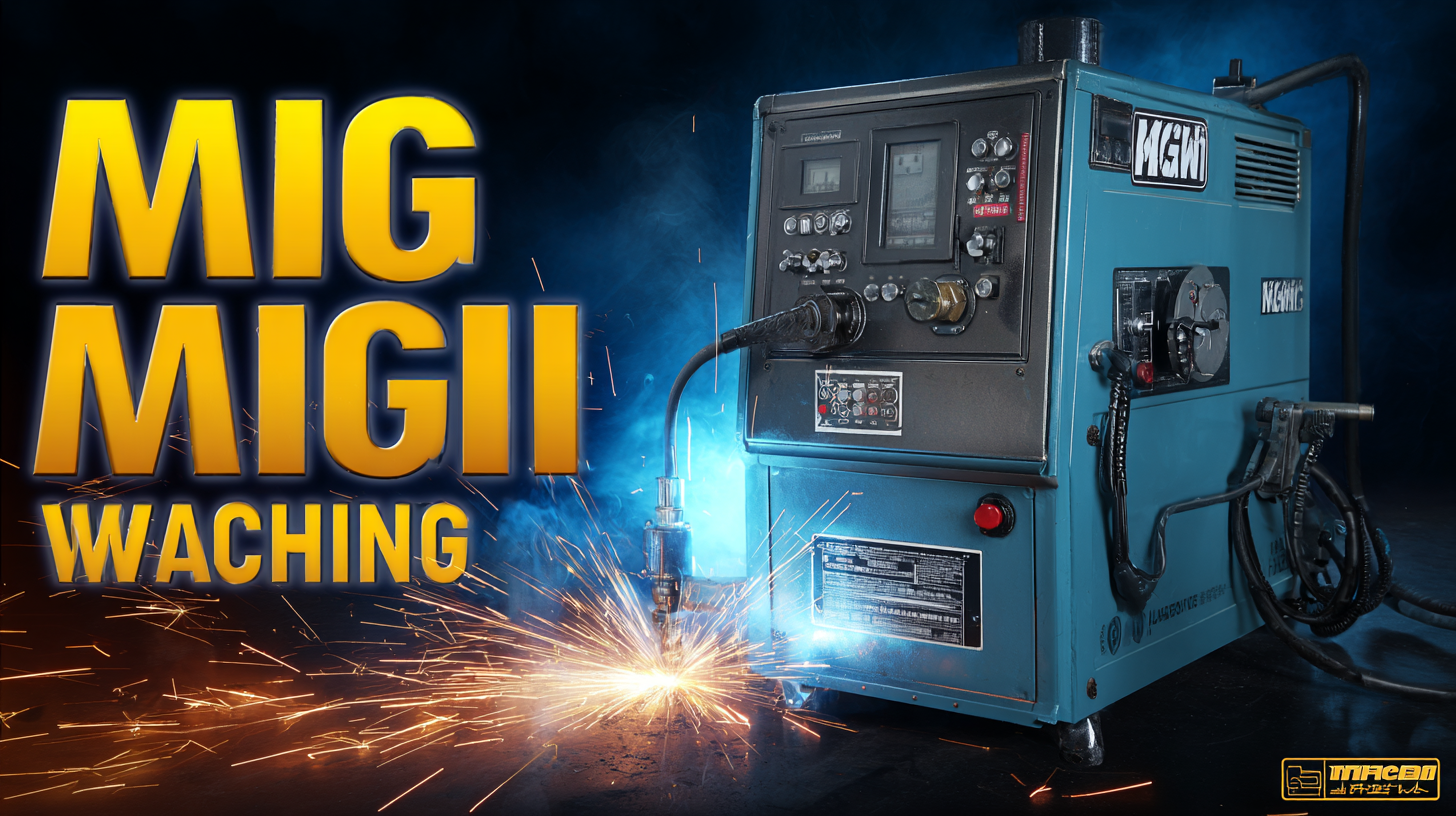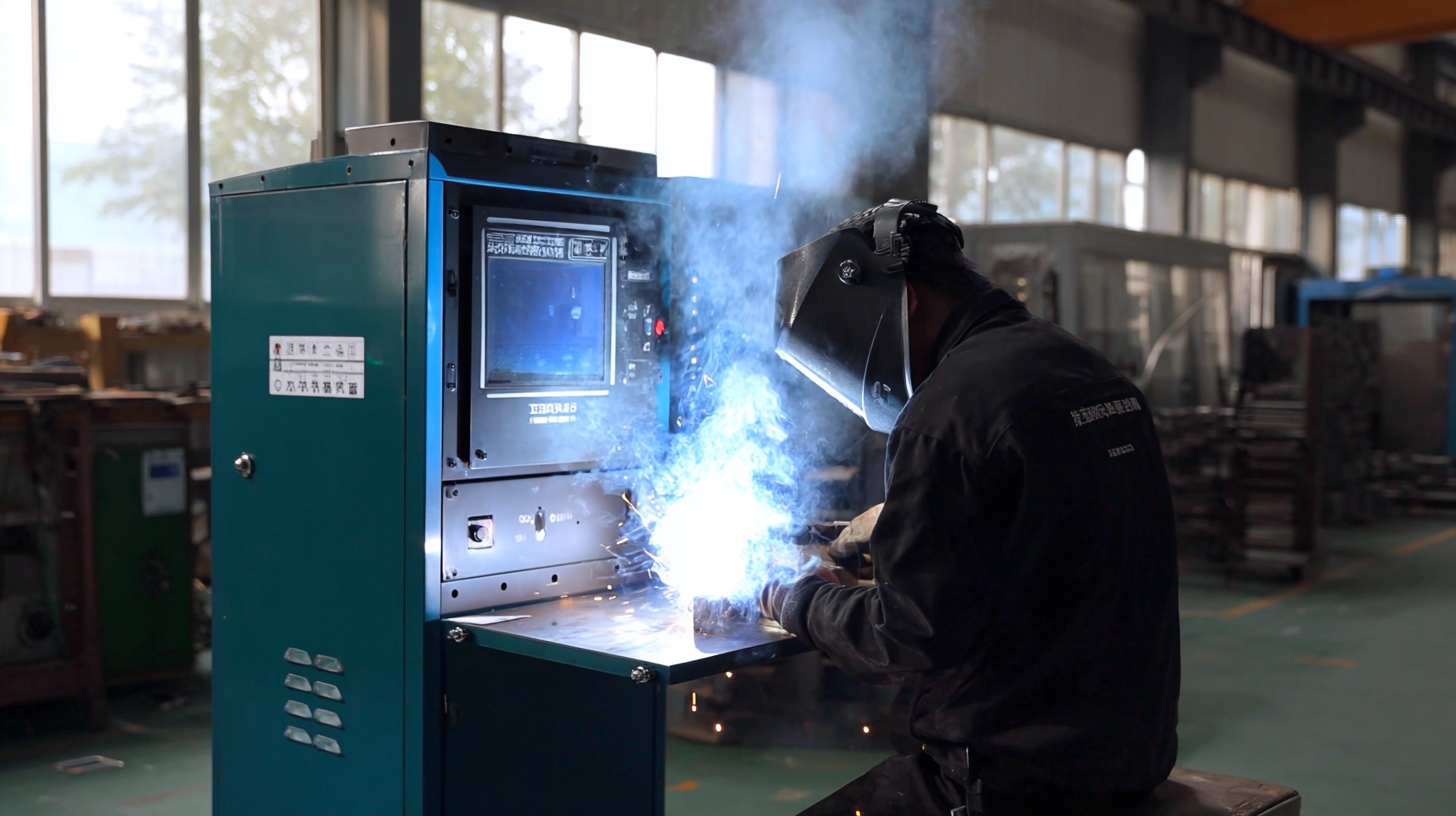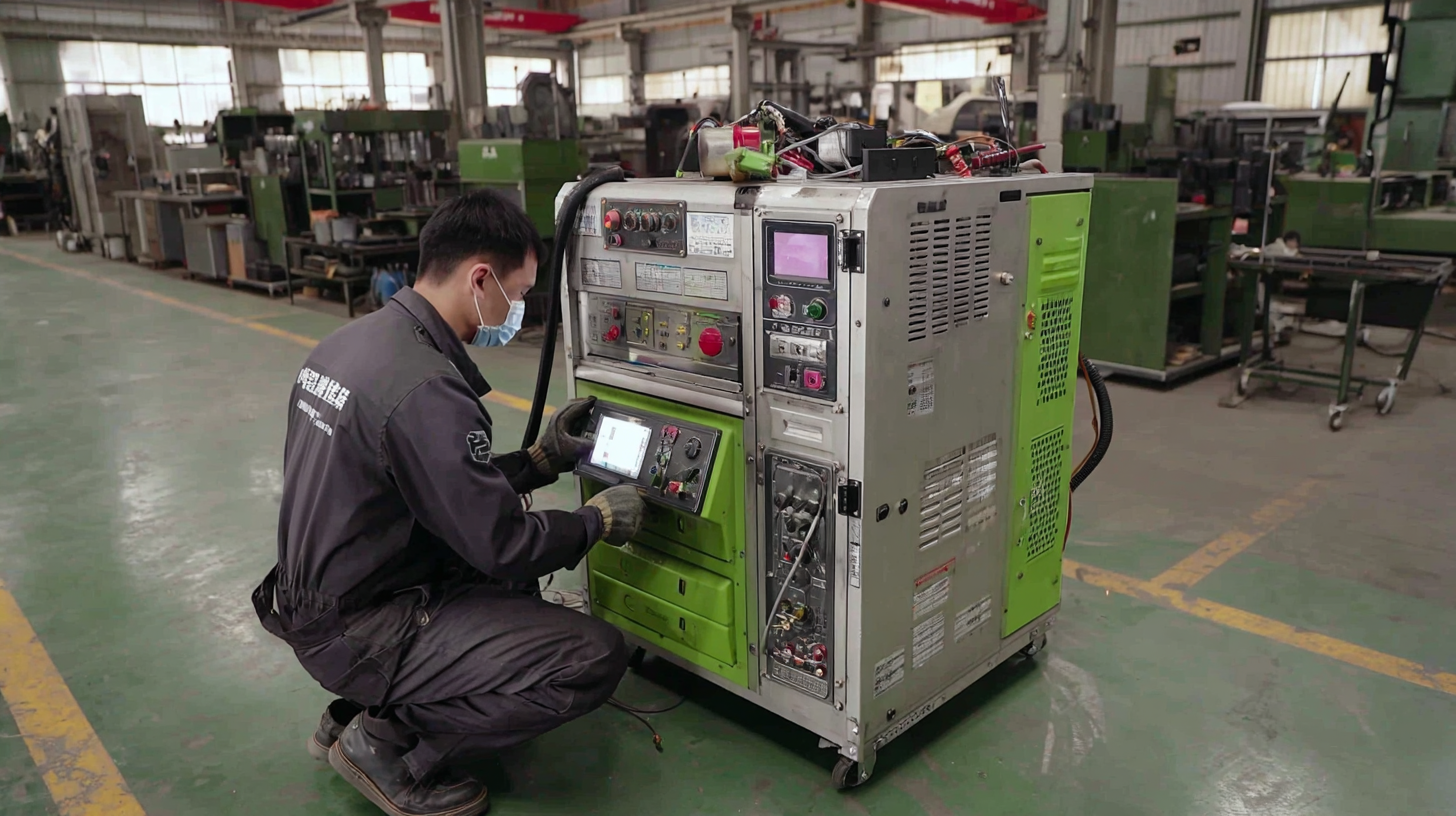In the ever-evolving landscape of industrial manufacturing, the demand for efficient and high-quality welding solutions has surged, with Mig welding machines leading the charge. According to a market analysis report from Grand View Research, the global MIG welding machine market is projected to reach a significant valuation of over $3 billion by 2026, reflecting a compound annual growth rate (CAGR) of 6.4% from 2019 to 2026. This growth is driven by the booming automotive and construction sectors, where precision and durability are paramount. As China solidifies its position as a premier manufacturing hub, its Mig welding machines are increasingly recognized for their robust design, advanced technology, and cost-effectiveness. This blog will unveil the finest Mig welding machines from China’s leading manufacturing factory, demonstrating how they meet the stringent demands of modern welding applications.

The evolution of MIG welding technology has undeniably transformed the welding landscape, and China's leading manufacturers are at the forefront of this innovation. With an increasing global demand for reliable and efficient welding machinery, these factories are continuously developing advanced MIG welding machines that cater to various industrial needs. Innovations such as improved arc stability, enhanced energy efficiency, and user-friendly interfaces are just a few of the key advancements making waves in the industry.

For those considering a MIG welding machine, here are some tips to keep in mind. First, assess the type of materials you will be working with, as different machines have varying capabilities for welding thin or thick metals. Second, pay attention to the duty cycle of the welding machine, as this will determine how long you can operate it continuously without overheating. Lastly, don’t overlook the importance of portability; if you plan to move your machine frequently, look for lightweight options with robust designs.
Moreover, the global welding electrode market has shown significant growth, valued at $3 billion in 2019 and projected to expand at a compound annual growth rate of 2.8% through 2032. This statistic underscores not just the growing acceptance of MIG welding technologies but also the potential for emerging innovations to shape the future of welding equipment. By investing in quality machines and staying updated with the latest innovations, welders can enhance their productivity and ensure superior results in their projects.
In the rapidly evolving landscape of welding technology, 2025’s top MIG welding machines have set a new benchmark in performance metrics. Among them, a standout model is celebrated for its exceptional power and robust build quality, making it an excellent choice for both novices and seasoned welders alike. Its versatility allows users to handle a variety of projects with confidence, making it a reliable machine for diverse applications. The integration of advanced features enhances operational ease while maintaining consistent welding quality, a crucial factor for any professional.

Another noteworthy entry in the MIG welding market offers an extensive amperage range, showcasing adaptability that appeals to a wide array of welding tasks. This model is designed to accommodate various materials, ensuring a smooth workflow for users who demand efficiency. Meanwhile, a multi-functional machine that combines welding and cutting capabilities offers an all-in-one solution, catering to welders looking for convenience without compromising on performance. These innovations in MIG welding technology reflect the commitment of manufacturers to enhance user experience and optimize output for every welding project.
In recent years, the integration of AI and automation in the MIG welding sector has revolutionized the manufacturing landscape. According to a report by Research and Markets, the global welding equipment market is expected to reach $21 billion by 2026, with a significant portion driven by advancements in automation technologies. AI applications in MIG welding not only enhance precision but also improve the overall efficiency of the fabrication process. Automated systems can analyze and optimize welding parameters in real-time, leading to reduced operational costs and improved weld quality.
AI-driven MIG welding machines utilize machine learning algorithms to adapt to various materials and conditions, ensuring that the best welding techniques are employed automatically. For instance, a study published by the International Institute of Welding indicates that the adoption of smart welding technologies can lead to a 30% increase in productivity. Additionally, these intelligent systems reduce the likelihood of human error, significantly lowering the chances of defects and rework, which are critical in maintaining quality standards in manufacturing industries that demand high precision. As industries increasingly turn to automated welding solutions, the role of AI in enhancing efficiency and reliability will become even more pronounced.
The global market for MIG welding machines is rapidly evolving, fueled by the increasing demand across various sectors, including infrastructure and manufacturing. As industries expand, consumer preferences are shifting towards more efficient and advanced welding technologies. The rise in automated processes is prompting manufacturers to innovate, focusing on features such as adaptability, energy efficiency, and user-friendly interfaces. This trend is paving the way for the development of cutting-edge MIG welding machines that cater to the specific needs of modern fabrication environments.
Moreover, as market projections indicate a steady growth in related sectors—like the welding consumables market, expected to exceed USD 34.9 billion by 2035—the relevance of high-quality MIG welding machines becomes even more apparent. Manufacturers are responding to this demand by enhancing product performance and durability, addressing factors that influence consumer choices. The focus on sustainable practices and the incorporation of new materials further highlight the direction in which MIG welding machine development is headed, aligning with broader industry trends aimed at meeting the challenges of a rapidly changing marketplace.
| Model | Power Output (kW) | Wire Feed Speed (m/min) | Weight (kg) | Consumer Rating (out of 5) | Price (USD) |
|---|---|---|---|---|---|
| MIG-200A | 7.5 | 15 | 20 | 4.5 | 450 |
| MIG-250D | 9.5 | 20 | 25 | 4.7 | 600 |
| MIG-350F | 12 | 22 | 30 | 4.9 | 750 |
| MIG-500C | 15 | 25 | 35 | 5.0 | 950 |
China's welding industry is making significant strides toward sustainability, embracing eco-friendly innovations and practices that align with the global push for greener manufacturing. As highlighted in recent reports, companies are establishing greener manufacturing systems that not only reduce waste but also enhance energy efficiency. This shift is pivotal in building an ecological civilization that prioritizes environmental health alongside industrial growth.
In the realm of MIG welding machines, manufacturers are leading the charge by integrating sustainable materials and processes. This commitment to eco-friendliness ensures that the production of these machines does not compromise environmental standards. Whether through the use of recyclable materials or energy-efficient production techniques, Chinese factories are setting a benchmark for sustainability in the welding sector, showcasing how advanced manufacturing can harmonize with ecological responsibility.
The future of welding in China looks promising, driven by a collective effort to innovate while being mindful of our planet's well-being.
